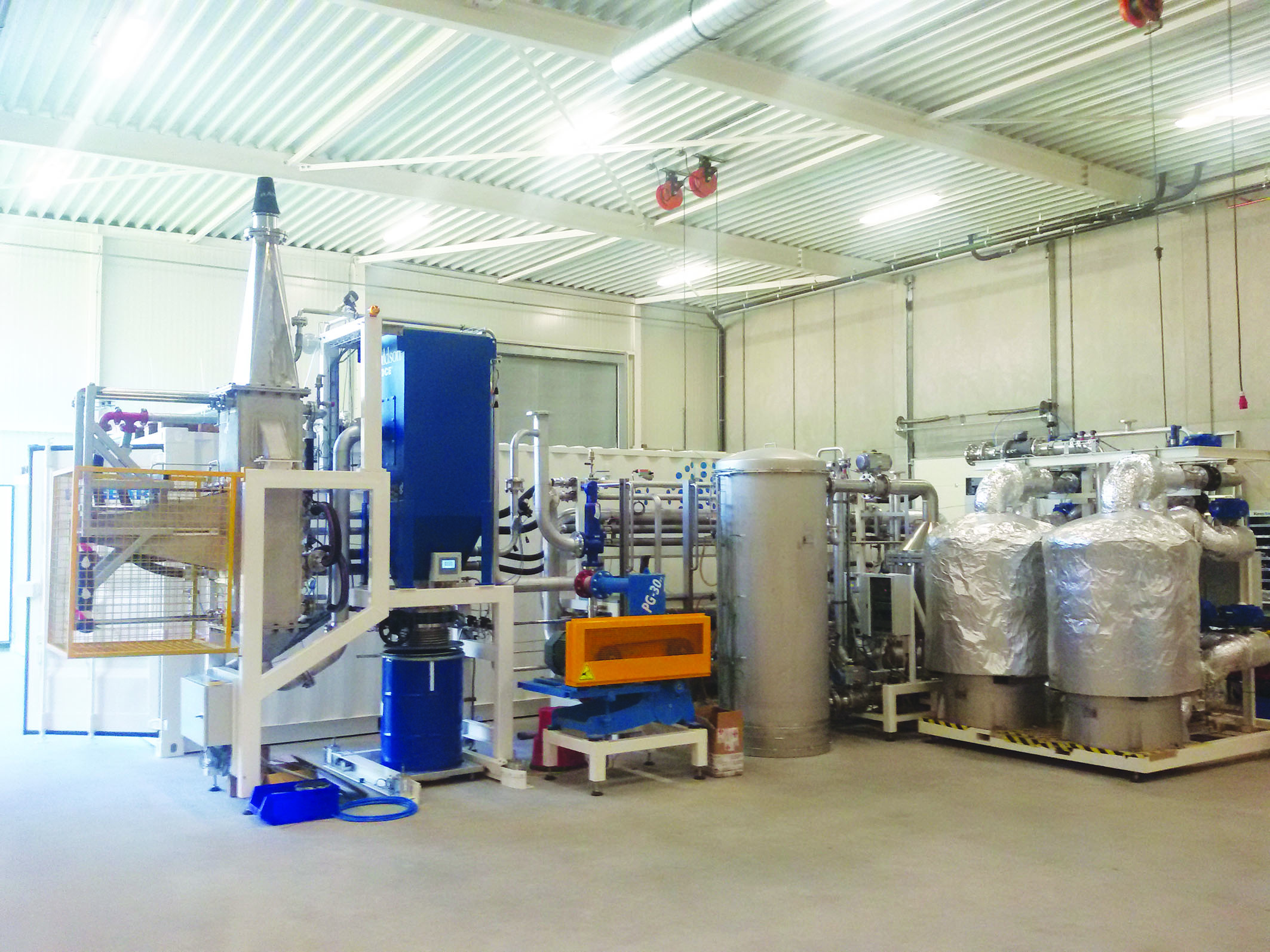As a gas supplier, HyGear made its entry to the flat glass industry with its small-scale on-site hydrogen generation systems that fit the requirements in terms of gas purity, reliability in gas flow and significant cost reduction. The company has also identified the need of glass companies to use more protective gases in order to improve the quality of their end product. Currently, all these gases are vented to the environment and largely, within the facility of the glass plant.
The increasing desire to reduce environmental impact therefore conflicts with the objective to reduce costs and improve product quality. This was the starting point for the development of the Hy.RECmix. This technology has the ability to recover, clean and recycle the vented gases from the tin bath and feed them back into the process. By using this method, the amount of fresh gas that is required for the process reduces, thus leading to lower expenses and less venting. This results in a reduction of harmful emissions, without jeopardising product quality.
Advantages
HyGear is not the first company to design gas recycling systems. The reason for the limited market penetration of previously launched systems is the low internal rate of return, caused by high capital investment and high energy consumption. Both aspects are due to the fact that the spent gases are only available at low pressure and most of the common upgrading methods require large pressure differentials. The Hy.RECmix is designed on innovative low pressure upgrading technologies and therefore, consumes the lowest possible electricity and lowest possible maintenance expenses.
Most importantly, the Hy.RECmix does not interfere with the glass production process. Connecting the system to the float line is not limited to the period when a cold or hot repair has to be carried out; it can be performed while the float line is operating under normal conditions.
Reduced environmental impact
The development of the Hy.RECmix is to recover the gas mixtures from the tin bath in float glass production and to reuse the gas within the process. In the current production process, significant amounts of hydrogen and nitrogen gas mixture, including pollutants, are vented and left unutilised.
This technology has proved to be an effective method for cost reduction as the amount of fresh gas feed will decrease and the carbon foot print of the whole process will decrease as well.
Working principle
Extraction of the entire mixture of hydrogen and nitrogen can be performed from the hot end of the tin bath. Depending on the desired venting rate, this could go up to 700 Nm3 per hour on a single Hy.RECmix system.
There are three stages in the process of gas recovery by the system:
- Firstly, the dust removal stage uses cooling and mechanical separation techniques to remove tin-oxide from the recycle gas flow. Tin can be recovered from the captured dust and used again in the float line.
- Next, the sulphide and oxygen removal stage uses physical and chemical low pressure separation techniques for desulphurisation and deoxidation.
- And finally, the post treatment stage concerns drying of the gas mixture and further purification up to the purity and dew point required to be fed back into the process.
The advanced gas cleaning system, Hy.REC will feed the recovered gas through HyGear’s low pressure supply system to each of the float line bays separately, ensuring low pressure drop and continuous gas supply. Through the company’s highly reliable feeding system, the float glass plant operator has the ability to configure the gas composition separately in each bay of the float line, allowing the controller to reduce the hydrogen required in different parts of the tin bath.
Technology status
The Hy.RECmix technology was developed in close co-operation with Saint-Gobain. In recent years, modules for cleaning different components have been tested at HyGear as well as Saint-Gobain’s float line in Herzhogenrath, Germany. These tests have led to an integrated system that is currently installed at Saint-Gobain’s float line in Porz, Germany (see image), where it is deployed to recover a maximum of 700 Nm3 per hour of mixed gas from the tin bath, clean it and feed it back into the process.
More information
The HyRECmix offers a series of technologies that are combined in an innovative way to lower capital and operational expenses. Operation of the system is fully automated and the quality of gas produced is continuously monitored by the system’s programmable logic controller.
The standardised system fits every float line but can be tailored to the specific requirements of different lines related to number and location of injection points and variations in gas compositions over the tin bath. Systems are housed within a 40ft container or can be skid-mounted to match space restrictions in specific situations. Installation, integration and commissioning at the site can be accomplished in four weeks.


